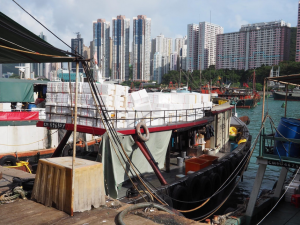The mountainous region of Jammu and Kashmir is set to have its first disaster management plan in the coming months, thanks to the revised master plan of Srinagar city and close monitoring of the state’s high court on the state government’s disaster management policy and planning.
The revised ‘Master Plan ‘til 2035’ has, for the first time, included a comprehensive disaster mitigation and management plan for Srinagar city and other parts of Kashmir. Currently being examined by a top level committee, the plan will be approved by the Jammu and Kashmir cabinet within the next two months.
Recent disasters in Kashmir
Jammu and Kashmir is a multi-hazard prone region with floods, earthquakes, landslides, avalanches, high velocity winds and snowstorms frequently occurring in the state.
- February 18, 2005: A snowstorm in the villages of Waltengu Nad, Pachgam and Nigeenpora in south Kashmir claimed 154 lives and caused huge property damage.
- October 8, 2005: In one of the deadliest earthquakes on the subcontinent for decades, a 7.6 magnitude earthquake killed 1,350 people and injured 6,266 in India’s Jammu and Kashmir state, while 79,000 people died in Pakistan-administered Kashmir.
- August 5 and 6, 2010: The cold desert of Leh witnessed a devastating cloudburst followed by flash floods. The unprecedented event resulted in the death of more than 170 people and damage worth millions of rupees.
- September 2014: Flooding in Kashmir claimed over 460 lives and caused damage to private property, businesses and government infrastructure worth billions of dollars.
The large-scale destruction caused by floods in September 2014 was widely attributed to decades of haphazard development in Srinagar city and Kashmir’s other towns. The flood, critics say, destroyed developmental and housing infrastructure which had been raised in the erstwhile flood basins in recent decades.
Revised master plan
The revised master plan envisages the rehabilitation and resettlement of thousands of families living within designated flood basins, rather than constructing the 82 kilometre Flood Spill Channel. The channel, which would enhance the carrying capacity of flood channels to 120,000 cubic feet per second, is estimated to cost INR 210 billion crore (USD 3.4 billion).
Rehousing people who have already settled in flood absorption basins would cost far less than the proposed channel, Fayaz Ahmad Khan, Kashmir’s chief town planner, told thethirdpole.net. Referring to expert views, Khan added that the channel would also have several social and ecological implications.
The master plan also proposes comprehensive watershed mapping of the Jhelum river’s major tributaries, as well as forest regeneration and slope stabilisation for the retention of rainwater in its upper reaches. The plan proposes the construction of check-dams, reservoirs and diverting canals for mitigating the impacts of floods; the revival of water bodies for increasing their absorption capacity; and reconnecting disconnected water bodies.
The State Disaster Management Authority (SDMA) is considering incorporating all of these proposals into the new state disaster management plan which will be made public in the coming months.
“We are keen about disaster mitigation,” Amir Ali, director of the SDMA, told thethirdpole.net. “This is what we need to do to avoid frequent flooding of Kashmir.”
Over the last two months, the SDMA has been twice directed by the state high court to come up with an effective disaster management policy and plan.
On 12 September, the high court sought a status report from the state government about the measures being taken regarding disaster mitigation and management. The government revealed its revised disaster management policy document on 25 October but is yet to produce its disaster management and mitigation plan which, Ali says, is under preparation.
We want to hear from you! Tell us what you think about The Third Pole and you could win $100. Take our survey here.
![<p>A view of receding flood waters in Srinagar city during the September 2014 flooding. [image: Athar Parvaiz]</p>](https://dialogue.earth/content/uploads/2017/11/A-view-of-receding-flood-waters-in-Srinagar-city-during-the-September-2014-flooding-Credit-Athar-Parvaiz-e1509633052651.jpg)







